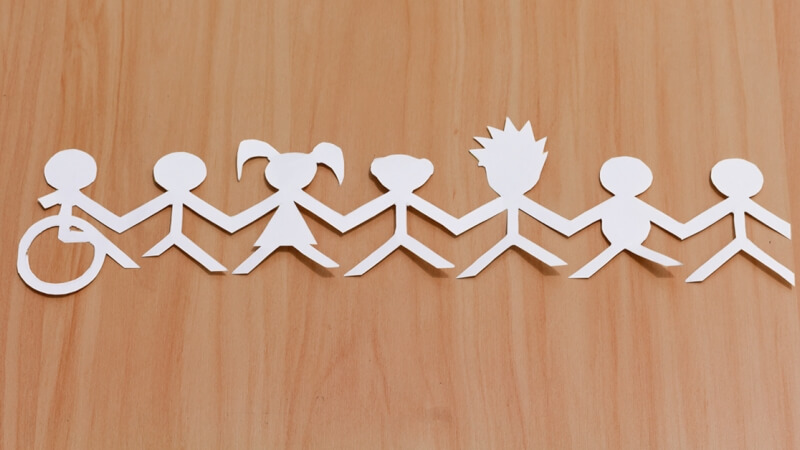Verna Myers, Netflix VP of Inclusion Strategy has said, "Diversity is being invited to the party. Inclusion is being asked to dance." I’d add that inclusion is also being part of the team hosting the event—the team that decides the music, the guest list, the type of food and drink, and the event date.
You’ve worked hard to try to counter biases in the hiring process. You’ve:
- focused on the specific underlying skills necessary to do the jobs well, which isn’t necessarily people’s past experience doing the work,
- changed the language in the job descriptions to be more inclusive of diverse candidates,
- posted job openings in a wider variety of places, and
- trained the folks involved in the hiring process on the best practices to make interviews and decisions as free of bias as possible.
You’ve onboarded your new hires. Now what?
What Will It Be Like for Your New Hires?
If you want your new hires to thrive, to make the teams and organization stronger, to help create better products and services, better solutions, better performance, and you want to retain these employees, then you need to make sure everyone in the organization has the skills to be an inclusive team member in addition to feeling valued and respected.
- Do they know how to engage with others respectfully, and why they should?
- Do they know why it’s important to the organization, and how it aligns with the organization’s values?
- Is it clear that the organization values employees who help create an inclusive work environment?
Without an inclusive work environment, all your efforts to hire qualified applicants, including diverse applicants, can be for naught. Employees are likely to leave if they don’t feel they are given an equal chance to contribute, to perform up to their potential, and are not valued and respected.
Civility and Respect
In a sense, an inclusive work environment is fundamentally about civility. What does it mean to be civil? In essence, to be civil is to be courteous, to treat others with respect— to be thoughtful of others, and to be aware of how your actions (and those of other people) might affect someone and adjust your behavior accordingly.
What’s the big deal about being uncivil at work, especially if it’s unintentional? Can’t people just grow thicker skin? The answer is “no’—they can’t just grow a thicker skin. Disrespect—whether intentional or not—hurts the person who was disrespected, hurts the organization, and hurts colleagues, customers, and partners. Consider that, incivility, when it occurs, is a problem in the workplace because it leads to:
- decreased productivity,
- lost time (as employees think about how to deal with uncivil incidents, try to avoid the offender, and minimize further incidents),
- poor morale and organizational reputation
- high attrition rate
- heartache for all concerned.
Incivility and disrespect (whether intentional or unintentional) are costly indeed. They can even be “contagious”: When people have been treated disrespectfully, they’re more likely to pass it on to others, including customers as well as colleagues. Unless steps are taken to change disrespectful behavior, it will likely continue.
Making Civility a Habit
To behave in a more inclusive manner often means changing our habits. Because habit change is hard and requires work, we need to be motivated to do it. That’s why it’s important for employees to understand—deeply—why respectful behavior with colleagues, customers, and partners is important. It’s expected. It’s rewarded. Such systemic support for habit change is crucial.
Then employees need to develop an awareness of how they’re behaving and how they should behave. For instance, during team meetings, it can mean not interrupting and giving the originator of an idea the credit. It means welcoming different perspectives for the additional insights and solutions they can provide. It means communicating appreciation genuinely and often for specific actions taken or not taken. Leading each person to know their contributions are welcomed and they are valued.
Clear and Civil Communication
If you think you might inadvertently say something that could be taken as disrespectful, be clear about your intentions (and, as appropriate, your motives) so other people don’t have to guess. Their guesses are likely to be wrong which creates tension and miscommunication.
Even if certain bias-related acts don’t happen at the current company, if they’ve happened in the past to the person, they are likely to be sensitized to the possibility that it COULD happen again and more likely to be on the lookout for it. Thus, when an act is ambiguous, they’d understandably be more likely to interpret in a “negative” way. That’s why it’s important to be clear when you have positive intentions. Being clear helps take any ambiguity out of the situation. Note that cracking a “joke” that you think might be offensive and then say “just joking” is not what I mean by “clarifying.”
Civility involves thinking about how your words and actions might impact someone—which means having an awareness of his or her sensitivities. If you think it might be offensive, don’t say it.
As a respectful colleague, we have a three-fold responsibility:
- Through our words and actions, to be respectful of others.
- When we have been disrespected, to let the person(s) know what was disrespectful, why, and together discuss alternative ways the situation could have handled (as a learning opportunity). It’s not enough to suggest to the other person what not to do; we also need to suggest what TO do
- When we witness disrespectful behavior to others, we should try to intervene, respectfully.
About Trust, Belonging, Inclusion
Civility and respect give rise to and are deepened by, trust, belonging, and inclusion. Consider factors that lead people to go the extra mile with their job:
- a sense of camaraderie with colleagues,
- wanting to do a good job (e.g., caring about the work, the people, or the outcome, sense of pride and accomplishment),
- feeling recognized for their efforts,
- a sense of having an actual impact (that effort leads to actual outcome).
Teams and organizations that create a respectful culture—and one leading people to feel included and accepted, tend to perform better.
Diversity Without Inclusion
What’s become clearer than it ever is that a focus on diversity as increasing numbers doesn’t get companies or employees where they want to be. Diverse candidates who are hired in such companies aren’t as likely to stay, since they are apt to perceive that they were hired for their demographic identity (e.g., race/ethnicity, gender), not necessarily for the skills, capabilities, and perspectives that they bring to the team. In fact, with a focus on diversity numbers, the value that diverse employees bring is often not cultivated. It’s no surprise, then, that this doesn’t create a sense of belonging for all employees.
Diversity AND Inclusion
Diversity with (actual) inclusion is better: Everyone’s perspectives are valued and appreciated. As David Thomas and Robin Ely discuss, diversity and inclusion means directly welcoming diverse employees’,
“different, important, and competitively relevant knowledge and perspectives about how to actually do work—how to design processes, reach goals, frame tasks, create effective teams, communicate ideas, and lead. When allowed to, members of these groups can help companies grow and improve by challenging basic assumptions about an organization’s functions, strategies, operations, practices, and procedures. And in doing so, they are able to bring more of their whole selves to the workplace and identify more fully with the work they do, setting in motion a virtuous circle.”





